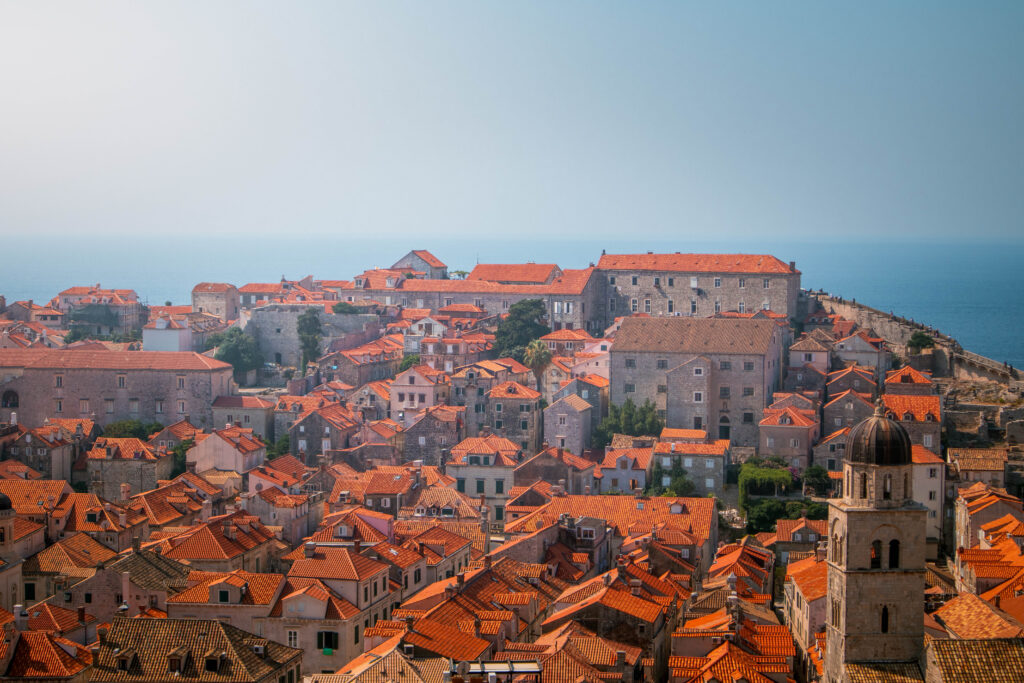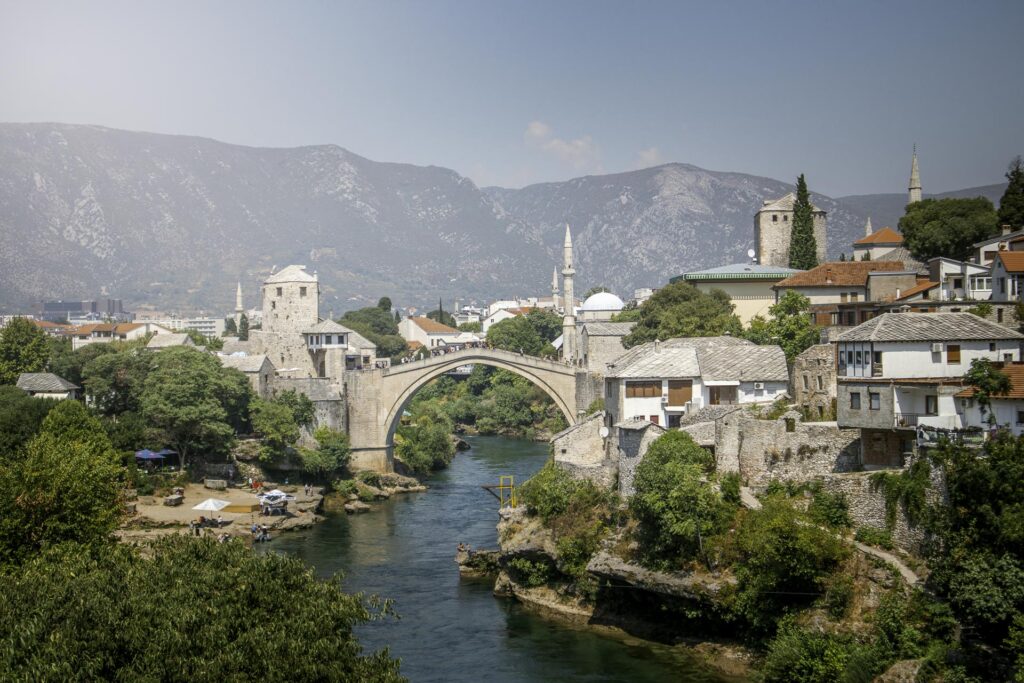VISIT CROATIA
With its elongated coastline and thousands of islands in the Adriatic sea, Croatia is the place to go if exploring ancient towns next to blue water is your idea of a good trip.
Currency
€ - Euro (1€ ≃ 1,05$ ≃0,86£)
POPULATION
3,9 millions
MAIN LANGUAGE
Croatian
AREA
56,594 km²
TIME ZONE
UTC+1 / UTC+2
FLAG
🇭🇷
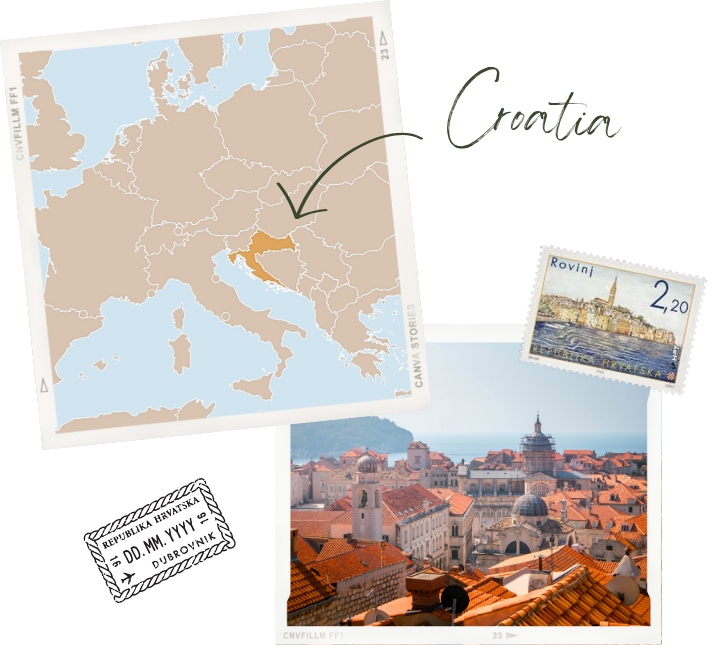

VISIT ZAGREB
The capital city of Croatia is a cultural, academic and artistic hub, with a prolific offer of museums and cafés.
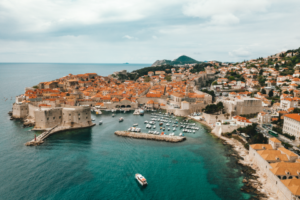
WALK DUBROVNIK WALLS
Surrounded by nearly 2km of unique medieval ramparts, Dubrovnik once was an independent city-state, and now is an Adriatic gem.
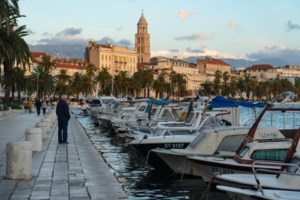
PARTY IN SPLIT
This Croatian town is where one can visit a Roman 4th-century palace in the morning, enjoy the beach in the afternoon, and party all night long.
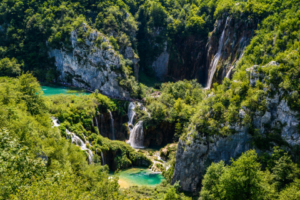
JAW-DROP IN PLITVICE
Plitvice lakes is a place of exceptional beauty, made of 16 teal blue lakes connected by 92 waterfalls and rivers, surrounded by lush forests.
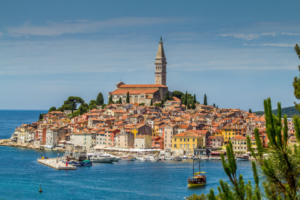
RELAX IN ISTRIA
This picturesque peninsula features stunning sea views, Roman ruins, seaside restaurants and Italian influences.
Pick a Croatian destination
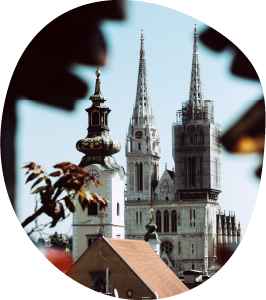
Zagreb
Capital of Croatia, combining Austro-Hungarian elegance with a lively café culture.
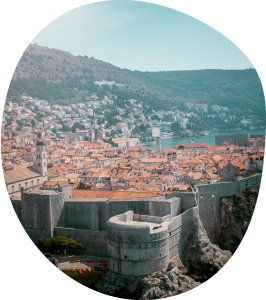
Dubrovnik
UNESCO-listed walled city also known as the 'Pearl of the Adriatic'
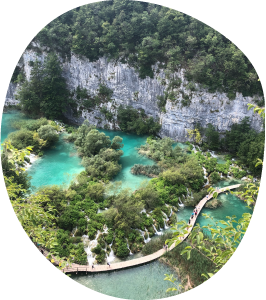
Plitvice
National park known for its turquoise lakes and cascading waterfalls.
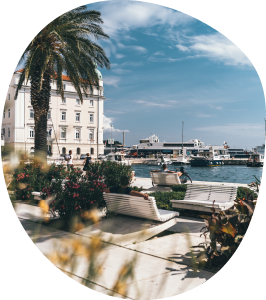
Split
Coastal city built around the Roman palace of Emperor Diocletian, buzzing with seaside energy.
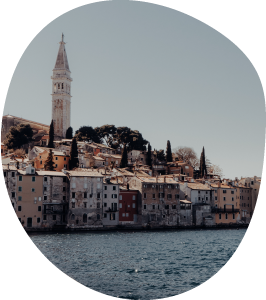
Istria
Heart-shaped peninsula with hilltop villages, vineyards, and a strong Italian influence.
Prepare your trip to Croatia
💡 Why visit Croatia?
Croatia is a country of dazzling Adriatic coastlines, ancient walled cities, and diverse natural beauty. With over a thousand islands, charming towns like Dubrovnik and Split, and stunning national parks such as Plitvice Lakes and Krka, it offers something for every traveler. Whether you’re into history, nature, or seaside relaxation, Croatia delivers unforgettable experiences. Must-see highlights include the medieval city of Dubrovnik, the island of Hvar, and the cascading waterfalls of Plitvice Lakes National Park.
🪪 Do I need a visa to visit Croatia?
Croatia is part of the Schengen area. Citizens of the EU, USA, Canada, Australia, and many other countries can enter visa-free for up to 90 days within a 180-day period. However, some nationalities do require a visa. It’s best to check with the nearest Croatian embassy or consulate for the most up-to-date information specific to your situation.
IMPORTANT NOTE: The information below is provided merely as an indication and applies for short-term tourism visa purposes only. Before your trip to Croatia, or if you are planning to come to Croatia for another purpose (work, studies, …), check the official information on the European Commission website’s page on Schengen visa application: https://www.home-affairs.ec.europa.eu/
⏳ Visa-free but limited to maximum 90 days for a period of 180 days if you are a citizen of one of the following countries: Albania; Andorra; Antigua and Barbuda; Argentina; Australia; Austria; Bahamas; Barbados; Belgium; Bosnia and Herzegovina; Brazil; Brunei; Bulgaria; Canada; Chile; Colombia; Costa Rica; Croatia; Czechia; Denmark; Dominica; El Salvador; Estonia; Finland; France; Georgia; Germany; Greece; Grenada; Guatemala; Honduras; Hong Kong; Hungary; Iceland; Israel; Italy; Japan; Kiribati; Kosovo; Latvia; Liechtenstein; Lithuania; Luxembourg; Macau; Malaysia; Malta; Marshall Islands; Mauritius; Mexico; Micronesia; Moldova; Monaco; Montenegro; Netherlands; New-Zealand; Nicaragua; North Macedonia; Norway; Palau; Panama; Paraguay; Peru; Poland; Portugal; Romania; Saint Kitts and Nevis; Saint Lucia; Saint Vincent and the Grenadines; Samoa; San Marino; Serbia; Seychelles; Singapore; Slovakia; Slovenia; Solomon islands; South Korea; Spain; Sweden; Switzerland; Taiwan; Timor-Leste; Tonga; Trinidad and Tobago; Tuvalu; Ukraine; United Arab Emirates; United Kingdom; United States of America; Uruguay; Vatican; Venezuela
🛂 Visa required if you are a citizen of one of the following countries: Afghanistan; Algeria; Angola; Armenia; Azerbaijan; Bahrain; Bangladesh; Belarus; Belize; Benin; Bhutan; Bolivia; Botswana; Burkina Faso; Burundi; Cambodia; Cameroon; Cape Verde; Central African Republic; Chad; China; Comoros; Congo; Congo (Dem. Rep); Cote d’Ivoire (Ivory Coast); Cuba; Djibouti; Dominican Republic; Ecuador; Egypt; Equatorial Guinea; Eritrea; Eswatini; Ethiopia; Fiji; Gabon; Gambia; Ghana; Guinea; Guinea-Bissau; Guyana; Haiti; India; Indonesia; Iran; Iraq; Jamaica; Jordan; Kazakhstan; Kenya; Kuwait; Kyrgyzstan; Laos; Lebanon; Lesotho; Liberia; Libya; Madagascar; Malawi; Maldives; Mali; Mauritania; Mongolia; Morocco; Mozambique; Myanmar; Namibia; Nauru; Nepal; Niger; Nigeria; North Korea; Oman; Pakistan; Palestine; Papua New Guinea; Philippines; Qatar; Russia; Rwanda; Sao Tome and Principe; Saudi Arabia; Senegal; Sierra Leone; Somalia; South Africa; South Sudan; Sri Lanka; Sudan; Suriname; Syria; Tajikistan; Tanzania; Thailand; Togo; Tunisia; Turkey; Turkmenistan; Uganda; Uzbekistan; Vanuatu; Vietnam; Yemen; Zambia; Zimbabwe
⛅ When is the best time to visit Croatia?
❄️ December – February: Winter is quiet and mostly popular for Zagreb’s charming Christmas markets or skiing in the inland mountains. Coastal cities like Dubrovnik are peaceful but many tourist services close. Temperatures range from 0°C (32°F) inland to 10°C (50°F) on the coast.
🌱 March – May: Spring is perfect for exploring without the crowds. Mild temperatures and blooming landscapes make it a great time for hiking, sightseeing, and island-hopping.
☀️ June – August: Summer is peak season, especially along the coast. Expect sunny weather and packed beaches. Dubrovnik, Split, and the islands can get very busy. Temperatures range from 25°C (77°F) to 35°C (95°F). Book accommodation in advance.
🍂 September – November: Autumn offers warm sea temperatures and fewer crowds. The weather is still pleasant, making it ideal for late-season beach time or visits to national parks.
🚉 How to Get Around Croatia?
Getting around Crotia is relatively easy, with several options available:
🚌 Buses: The bus network is extensive, reliable, and the most common way to travel. Buses connect all major cities, towns, and many villages. Services are frequent between Zagreb, Split, Zadar, Dubrovnik, and Rijeka.
🚂 Trains: Trains are available but less efficient than buses. The network mainly covers northern and central Croatia, including routes between Zagreb and Osijek, or Zagreb and Rijeka. There are no trains to Dubrovnik. For updated information, check the HŽPP (Croatian Railway) website.
🚗 Car Rental: Renting a car is ideal for exploring at your own pace, especially for visiting national parks or remote villages. Roads are in good condition, and the coastal highway is especially scenic. An International Driving Permit (IDP) is recommended if your license is not in Latin script.
💳 Can I use bank cards or cash for payments in Croatia?
Credit and debit cards are widely accepted in Croatia, especially in cities, hotels, and restaurants. Visa and Mastercard are most common. However, small shops, rural areas, and family-run establishments may prefer cash. The official currency is the euro (EUR) since 2023.
🔌 What type of plugs and voltage does Croatia use?
Croatia uses two plug types: C and F. They both have two grounding holes. Croatia operates on a 230V supply voltage and 50Hz frequency.
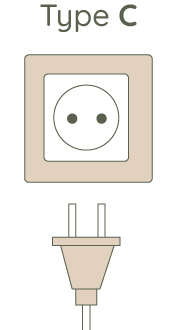
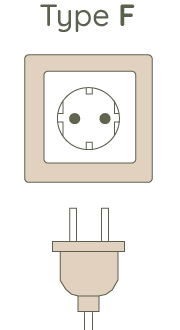
If needed, you can order an universal travel plug adapter here.
🪙 Is tipping customary in Croatia?
Tipping is appreciated but not mandatory in Croatia. A tip of around 10% is common in restaurants and cafés, especially in tourist areas.
🥛 Is it safe to drink tap water in Croatia?
Tap water is safe to drink throughout Croatia.
📅 When are public holidays and store closing days in Croatia?
Sunday is a closing day for many stores. There are 14 national public holidays in Croatia:
- New Year’s Day (January 01)
- Epiphany (January 06)
- Easter and Easter Monday (dates vary)
- Labour Day (May 01)
- Statehood Day (May 30)
- Corpus Christi (date varies)
- Anti-Fascist Struggle Day (June 22)
- Victory and Homeland Thanksgiving Day and the Day of Croatian Defenders (August 05)
- Assumption of Mary (August 15)
- All Saints’ Day (November 01)
- Remembrance Day for the victims of the Homeland War and the victims of Vukovar and Škabrnja (November 18)
- Christmas Day (December 25)
- St Stephen’s Day (December 26)
On these days, most businesses and offices will be closed, and many attractions may be shut or have limited opening hours.
🚦 What are the speed limits in Croatia?
In Croatia, traffic drives on the right-hand side of the road. The main speed limits are as follows:
- 50 kph / 30mph in built-up areas
- 90 kph / 56 mph on open roads
- 110 kph / 68 mph on expressways
- 130 kph / 80 mph on motorways
During adverse weather (rain, fog, etc.), the speed limits are lowered.
💬 What are some basic Croatian words I should know?
- Hello (informal) = Bok
- Good day = Dobar Dan
- Goodbye = Doviđenja
- Yes = Da
- No = Ne
- Thank you = Hvala
- Please = Molim
- You’re welcome = Nema na čemu
- Excuse me = Oprostite
- Day = Dan
- Night = Noć
- Good evening = Dobra večer
- Goodnight = Laku noć
- Mister = Gospodin
- Ma’am = Gospođa
- Street = Ulica
- Road = Cesta
💡 Tip: With the GoogleTranslate app, you can download the Croatian language to use it even offline!
🛡️ Is it safe to travel in Croatia?
Croatia is generally very safe for travelers. Crime rates are low, and the country is well-developed for tourism. However, it’s always wise to take standard safety precautions:
Secure Your Belongings: Pickpocketing can occur in crowded tourist spots. Keep valuables close and avoid leaving bags unattended.
Emergency Numbers: Dial 112 for all emergency services in Croatia.

